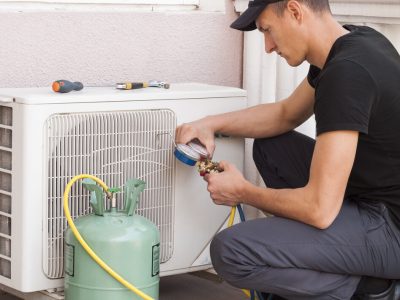While the sweeping process itself removes dangerous soot and creosote, the cleanup that follows is just as important. Thorough cleaning not only protects your home from lingering dust and debris but also ensures your fireplace area is safe, comfortable, and ready for use.
Knowing how to clean up after chimney sweeping San Antonio style means understanding the right tools, techniques, and local disposal rules. This guide will walk you through each step, from gathering supplies to that final inspection, so you can tackle chimney cleanup with confidence and keep your home pristine.
Tools Needed
Having the right tools at hand makes chimney cleanup faster, safer, and more effective. Here’s a checklist of what you’ll need:
- Heavy-duty vacuum (preferably with a HEPA filter) for fine soot and ash
- Dustpan and small broom for sweeping up larger debris
- Stiff-bristled hand brush for scrubbing stubborn soot from the firebox
- Microfiber cloths or rags for wiping surfaces
- Bucket with warm, soapy water for washing down the hearth and surrounding area
- Protective gloves to shield your hands from soot and chemicals
- Dust mask or respirator to prevent inhaling fine particles
- Safety goggles to protect your eyes from dust
- Trash bags (preferably heavy-duty or contractor grade)
- Plastic sheeting or drop cloths to cover nearby furniture and flooring
- Painter’s tape for securing plastic sheeting
- Old towels or absorbent mats for catching drips and spills
Optional but helpful tools include a shop vacuum, a hand-held steam cleaner for tile or brick, and a flashlight for inspecting dark corners.
Step-by-Step Cleanup
A methodical approach ensures you don’t miss any spots and helps minimize mess. Follow these steps for a thorough post-sweeping cleanup:
Step 1: Prepare the Area
- Remove all tools, brushes, and rods used during sweeping.
- Carefully fold up and shake out any tarps or drop cloths, keeping soot contained.
- Open windows or doors to ventilate the area and reduce lingering dust.
Step 2: Vacuum Loose Soot and Debris
- Use a heavy-duty or HEPA vacuum to clean the hearth, firebox, and surrounding floor.
- Start from the inside of the fireplace, working outward to prevent tracking soot into clean areas.
- Vacuum corners, cracks, and crevices where ash and dust tend to settle.
Step 3: Sweep Up Remaining Debris
- Use a dustpan and broom to collect larger chunks of debris, brick fragments, or creosote pieces.
- Dispose of these in a heavy-duty trash bag.
Step 4: Scrub the Firebox and Hearth
- Wearing gloves, use a stiff-bristled hand brush to loosen any stuck-on soot from the firebox walls and floor.
- Dip a microfiber cloth or rag in warm, soapy water and wipe down the firebox, hearth, and any exposed brick or tile.
- For stubborn stains, a paste of baking soda and water can help lift soot without damaging surfaces.
Step 5: Clean Surrounding Surfaces
- Wipe down mantels, fireplace tools, and nearby furniture with a damp cloth.
- If soot has settled on walls or baseboards, use a gentle cleaner and microfiber cloth to remove it.
- Vacuum or shake out area rugs and wash any removable covers or throws.
Step 6: Final Vacuuming
- Once all visible debris is gone, do a final pass with the vacuum to capture any remaining fine dust.
- Check under furniture and in adjacent rooms for stray soot particles.
Step 7: Remove and Wash Protective Coverings
- Carefully remove plastic sheeting or drop cloths, folding them inward to trap soot.
- Shake them out outdoors and launder or dispose of as appropriate.
Step 8: Wash Hands and Change Clothes
- Soot can cling to skin and fabric, so wash up thoroughly and change into clean clothes after finishing the cleanup.
Quick Cleanup Checklist
- Remove sweeping tools and tarps
- Vacuum hearth, firebox, and floor
- Sweep up large debris
- Scrub firebox and hearth
- Wipe down mantels and furniture
- Final vacuum of area
- Remove and clean protective coverings
- Wash hands and change clothes
Waste Disposal
Proper disposal of chimney debris is important for safety, cleanliness, and compliance with regulations.
Bagging and Containing Debris
- Place all soot, ash, and debris in heavy-duty trash bags. Double-bag if needed to prevent leaks.
- Tie bags securely and store them away from living areas until disposal.
Local Guidelines
- In San Antonio, small amounts of fireplace ash and soot can typically be disposed of with regular household trash, but always check with your local waste management provider for specific rules.
- Ashes must be completely cool before disposal to prevent fire hazards.
- Never dump ashes or soot outdoors, in gardens, or down storm drains, as they can be harmful to the environment.
Recycling and Special Disposal
- If you have large amounts of debris or old chimney liners, contact a local waste facility for guidance on bulk disposal or recycling.
- Some materials, like metal liners or certain bricks, may be recyclable.
Cleaning and Storing Tools
- Wash brushes, cloths, and gloves with warm, soapy water before storing.
- Allow all tools to dry completely to prevent mildew or rust.
Final Checks
Before declaring your cleanup complete, take a few final steps to ensure everything is safe and tidy.
Inspect the Fireplace and Surroundings
- Use a flashlight to check the firebox, hearth, and chimney opening for any missed debris.
- Make sure the damper is functioning smoothly and is free of obstructions.
Air Quality
- Run an air purifier or keep windows open for a few hours to clear any lingering dust.
- If you have a carbon monoxide detector near your fireplace, check that it’s working properly.
Safety Review
- Confirm that all cleaning supplies and debris have been safely removed from the area.
- Store fireplace tools and cleaning equipment in a dry, accessible place for next time.
Document Your Maintenance
- Make a note of the cleaning date and any issues you noticed during the process.
- If you notice signs of chimney damage or excessive soot, schedule a professional inspection before your next fire.
Example Final Checklist
- No visible soot or debris in firebox or hearth
- Damper operates smoothly
- Air in room is clear
- All supplies and debris removed
- Maintenance documented
Conclusion
Knowing how to clean up after chimney sweeping by a reputable company like https://chimneysweepsanantonio.net is just as important as the sweeping itself. With the right tools, a step-by-step approach, and attention to local waste disposal rules, you can keep your home clean, safe, and ready for cozy fires.
A thorough cleanup not only protects your living space from dust and allergens but also helps you spot any issues that may need professional attention. By following these guidelines, you’ll ensure your fireplace remains a source of warmth and comfort for years to come. Regular chimney care, including diligent cleanup, is a smart investment in your home’s safety and your family’s peace of mind.













Comments